- Home
- Identifying birds
Discover the Joy of Birdwatching: Learn How to Identify Wild Birds
You spot a flash of colour darting through the trees, but can't quite make out the details. You'd love to be able to name the species but learning how to identify wild birds can initially seem daunting.
Imagine recognising the cheerful melodies of songbirds or knowing who is visiting your bird feeder by their shapes and colours. It's an incredibly rewarding skill that deepens your connection with nature.
However, bird identification involves more than just visuals and sounds. Habitat, time of year, and migration patterns also play crucial roles.
In this guide, you'll learn simple yet powerful methods to confidently identify the species you encounter, even as a novice birdwatcher.
By observing sizes, shapes, and behaviours, while using tools like binoculars, a camera and field guides, you'll quickly become proficient.
All it takes is practice, patience, and these helpful tips to start you on the right path.
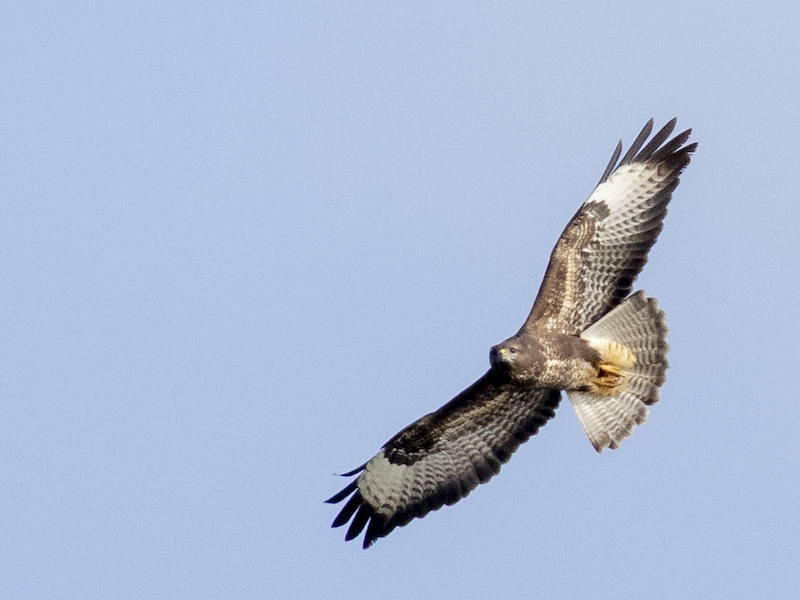 The solid body shape, fanned tail and distinctive patterning indicate this is a Common Buzzard.
The solid body shape, fanned tail and distinctive patterning indicate this is a Common Buzzard.Basic Bird Identification Techniques for Beginners
Identifying birds can be a fun challenge. While field guides are helpful, the best way to learn is by observing closely and noting key details.
Take note of the bird's size, shape, colours, markings, beak, and behaviour. Is it a duck, bird of prey or songbird? These basic observations are the first step.
It can be helpful to have a field guide to compare what you see with printed images and descriptions.
Taking your own photos or videos, especially with a long lens for close-ups, can also aid identification later. Try to capture the bird from multiple angles.
Jot down details in a notebook or on your phone - the habitat, whether it was alone or in a flock, if it was vocalizing. Only male birds sing, so that's a helpful clue.
All these notes will build your knowledge base over time.
The more you look and listen, the better you'll get at identifying your feathered friends.
How big is it?
Ever asked a fisherman how big the fish he caught was?
Did you believe the answer?
We've all experienced how easy it is for someone's perception of size to get skewed, especially when they're excited about something.
The same phenomenon can happen when you're birding and encounter an unfamiliar species. Your eyes may play tricks on you, making that bird seem much larger or smaller than it actually is.
So how can you accurately gauge the size of an unknown bird?
The key is to look for context clues and make comparisons to familiar objects or birds nearby.
Is it perched on a delicate twig or something more substantial? This may indicate the weight of the bird.
Try to compare it to another bird species you're familiar with.
One that caught me out in my early days, was a Crow. It seemed huge and I was sure it was a Raven, even though a more experienced birdwatcher disagreed.
It wasn't until I saw my first Raven, I realized my mistake!
What shape bill does the bird have?
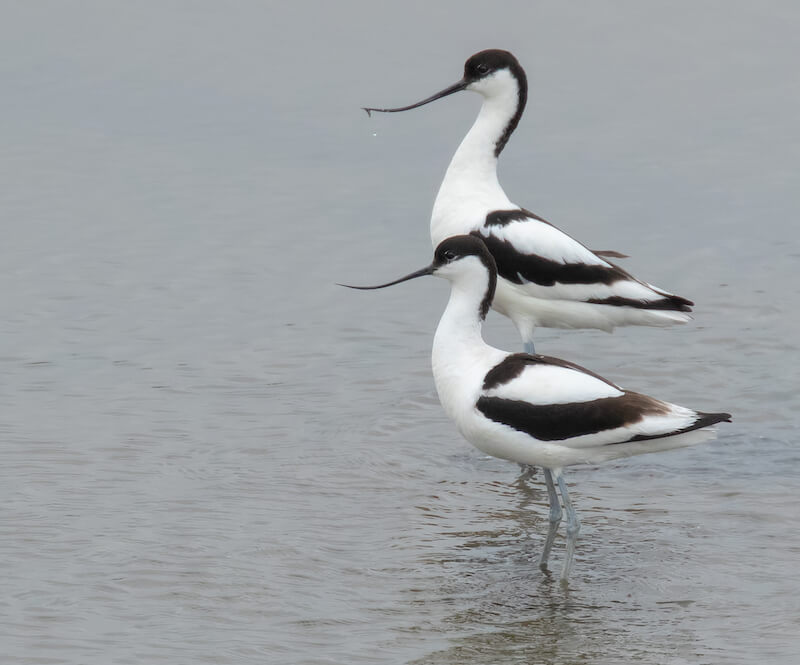 The distinctive long upturned bills identifies this pair as Pied Avocets instantly
The distinctive long upturned bills identifies this pair as Pied Avocets instantlyHave you ever wondered why birds have such peculiar-looking beaks?
From the long, curved bill of the curlew to the upturned beak of the avocet, a bird's bill is a fascinating evolutionary adaptation. It's nature's way of ensuring each species can thrive in its specific habitat and feed on its preferred diet.
Imagine a tall, showy great white egret wading through shallow waters, its bright yellow bill darting to snatch up unsuspecting fish.
Or picture a stout, seed-cracking bird using its thick, powerful beak to break open tough husks.
Every bird's bill is a specialised tool, perfectly shaped for its unique purpose.
So next time you spot a bird, take a closer look at its beak.
Those subtle differences can unlock clues about the creature's diet, habitat, and place in the ecosystem.
The shape of a bird's bill is an open book, just waiting to be read by the curious observer.
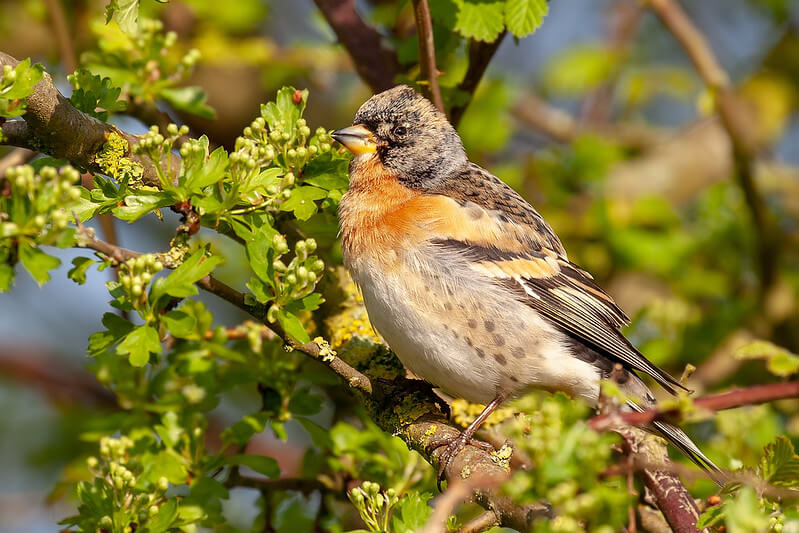 The short heavy bill helps to identify this Brambling as a seed eater
The short heavy bill helps to identify this Brambling as a seed eaterCheck out the tail and wings
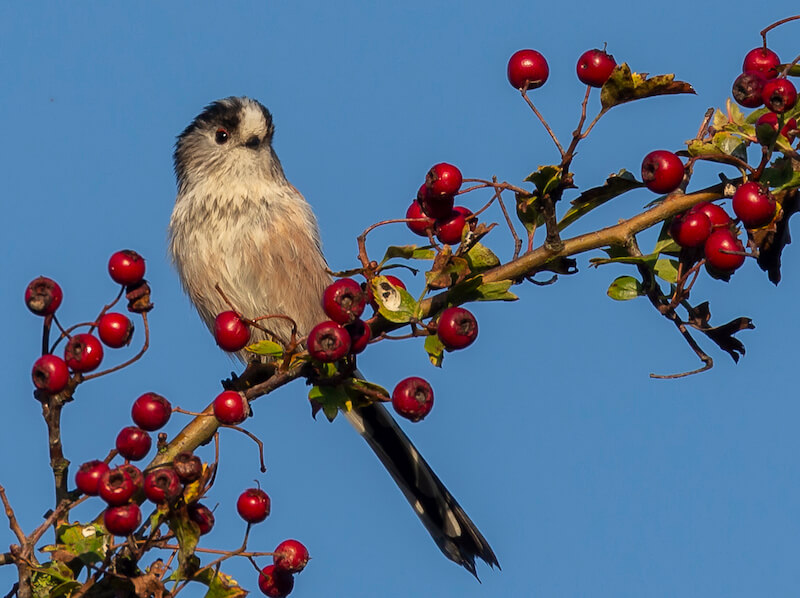 Tiny beak and long tail, along with the small overall size and colouration identify this as a Long Tailed Tit
Tiny beak and long tail, along with the small overall size and colouration identify this as a Long Tailed TitImagine you're out birdwatching, and you spot a feathered friend you can't quite identify. How do you figure out what species it is?
Closely observe its wings and tail then check in your field guide.
Here are the key details to look for when trying to identify an unknown bird:
A Distinctive Tail?
- Does it have a long or short tail?
- Is the tail striped or plain?
- Is it forked, straight or fan-shaped?
What can the wings tell you?
- How long are the wings from tip to tip?
- Are the wings rounded, squared-off or pointed?
- Are the wings long and thin or short and stubby?
- Do the wings have 'fingers' at the ends, and if so, how many?
- Check to see if the wings are stiff or bent at an angle when the bird is flying.
- Do they have coloured markings or are they plain with perhaps a contrasting coloured edge?
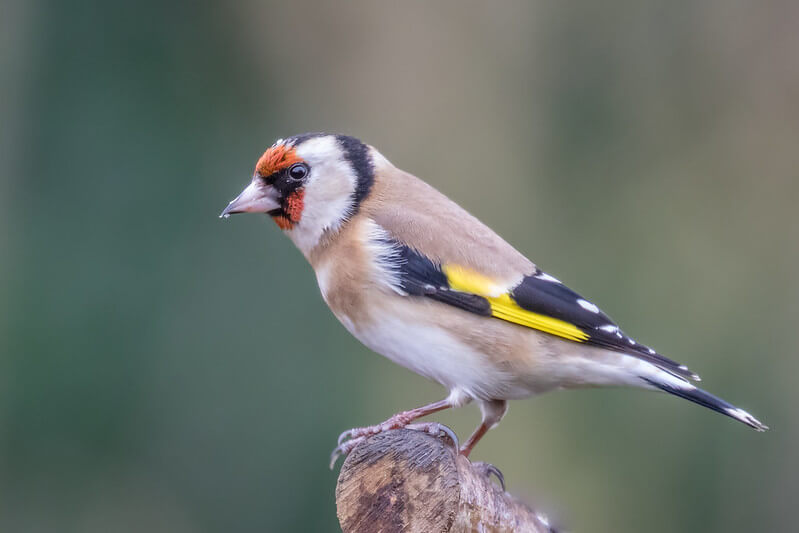 The red around the eye and the yellow wing flash tell us this is a European Goldfinch
The red around the eye and the yellow wing flash tell us this is a European GoldfinchStudy the bird for distinctive features
Another key to learning how to identify wild birds lies in recognizing distinctive "field marks" - the unique physical traits that birding experts use for identification.
From eye rings and wing bars to crests and throat patches, these subtle features can make all the difference.
Even something as simple as leg colour can provide a vital clue.
Of course, birds rarely stick around long enough for a comprehensive examination.
That's why learning to spot just one telling detail on your first glance is so valuable. It gives you a starting point to build upon if you're lucky enough to get a second look.
So study up on those common field marks.
Train your eye to notice the patterns and markers that set each species apart. With practice, you'll soon be identifying those once-mysterious birds with confidence and ease.
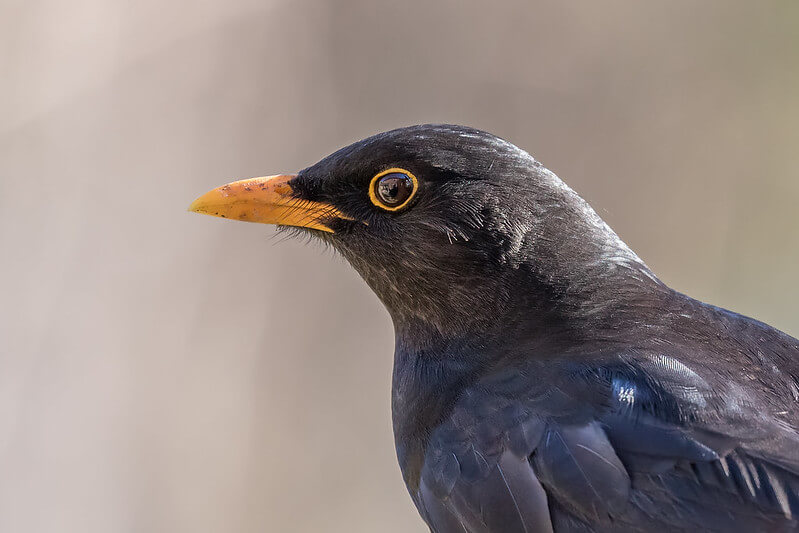 The yellow bill and eye ring immediately tell us this is a male blackbird
The yellow bill and eye ring immediately tell us this is a male blackbirdDifferences within the same species
Have you ever been birdwatching and found yourself puzzled by two birds that look distinctly different, yet seem quiet happy swimming around together?
If so, you're not alone!
The world of birds is full of surprises, especially when it comes to the striking variations in plumage between males and females of the same kind.
This can make things tricky for the novice birdwatcher.
These differences may be subtle, or very obvious indeed, as with the Mandarin ducks below, photographed at Barnwell Country Park in Northamptonshire!
This phenomenon is known as sexual dimorphism...
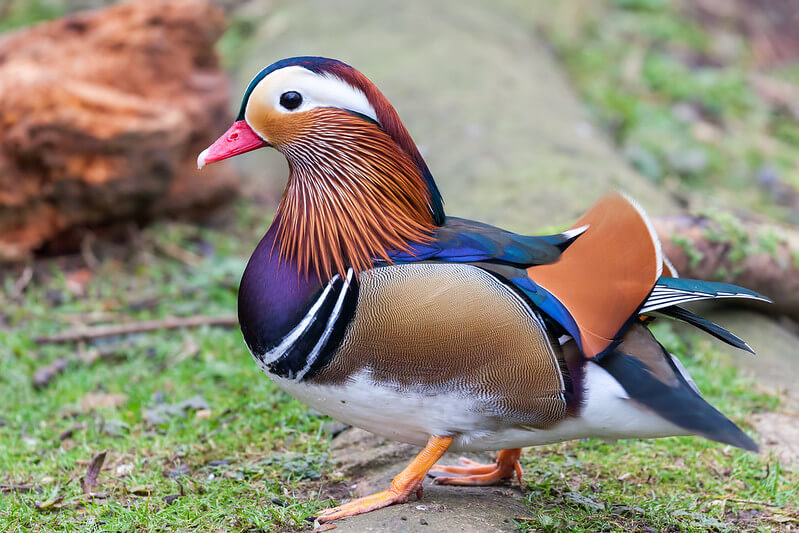 The colourful Mandarin Drake (male)
The colourful Mandarin Drake (male)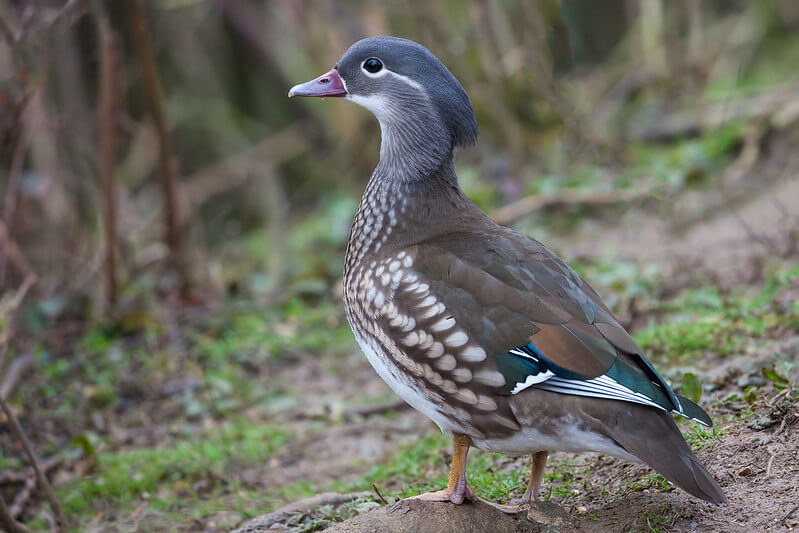 Compared to the more subtle plumage of the female Mandarin!
Compared to the more subtle plumage of the female Mandarin!Did you know that at certain times of the year, some male ducks undergo a complete moult, emerging with feathers that make them almost indistinguishable from the females? It's like they're wearing a disguise!
And that's not the only way birds can keep you on your toes.
In some species, the males and females may share similar feather patterns, but their colouring is what gives them away.
Take the Reed Buntings below - the male's darker plumage is designed to attract mates, while the female's browner hues help her blend in on the nest.
So the next time you're out birding, be prepared for nature's tricks!
Identifying males and females isn't always as straightforward as it may seem.
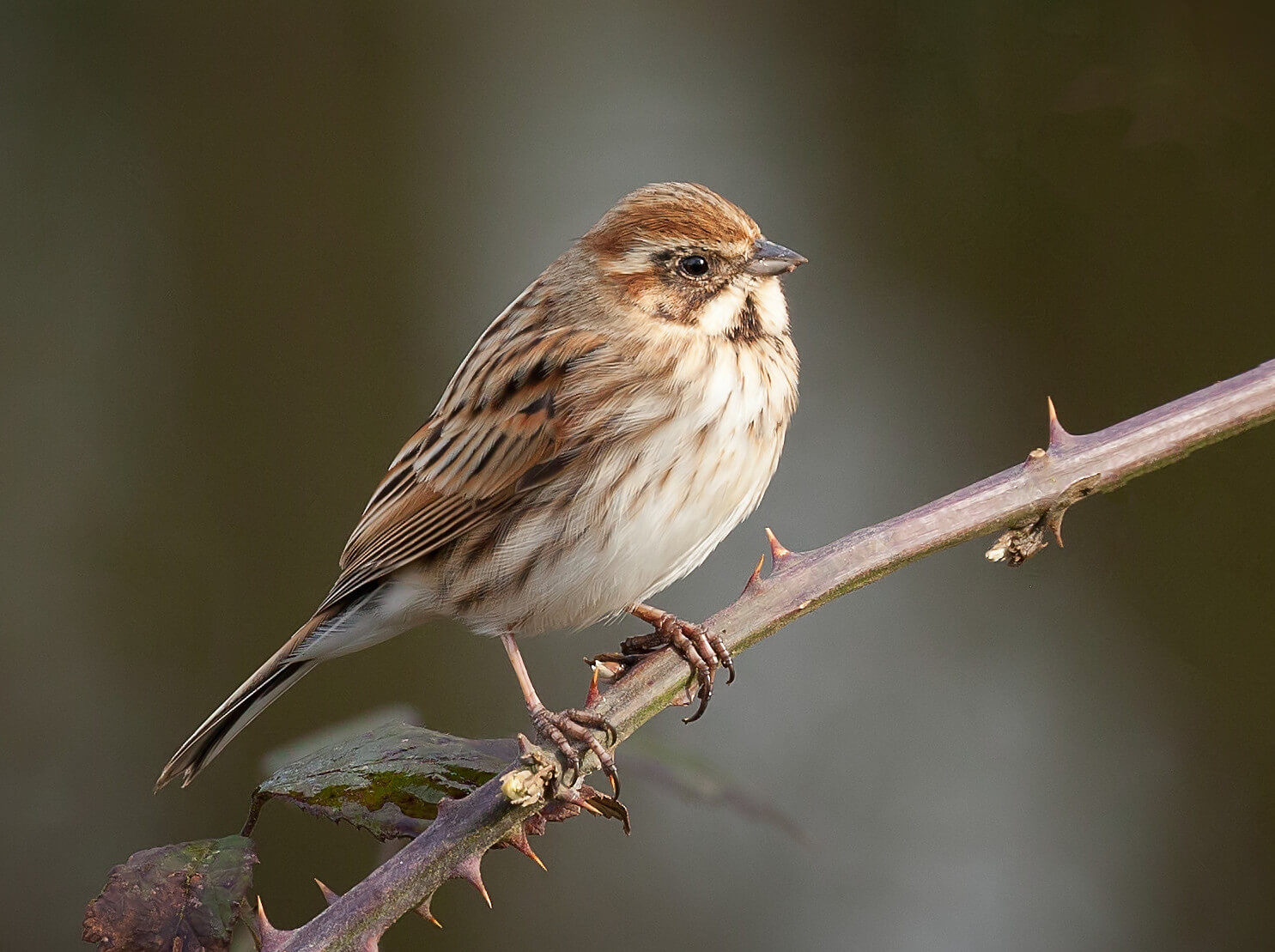 Female Reed Bunting
Female Reed Bunting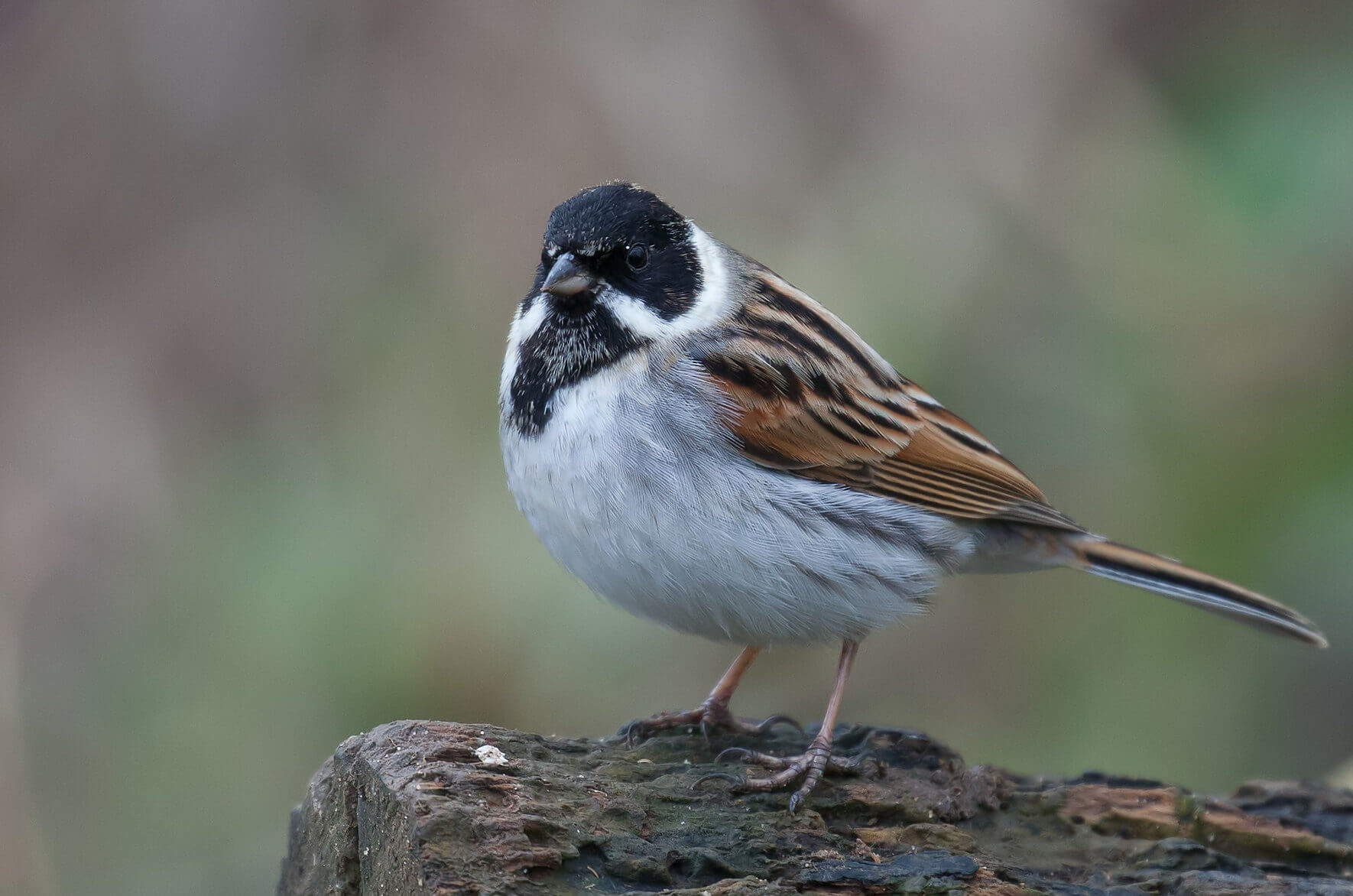 Male Reed Bunting in the breeding season
Male Reed Bunting in the breeding seasonThe LBJs can trip you up!
Ever get frustrated trying to identify those drab little brown birds?
You know, the ones that seem to blend together into an indistinguishable flock of "little brown jobs" (LBJs)?
Telling them apart can be maddening for birders of any experience level.
Those nondescript brown feathers and lack of striking field marks make many species deceptively difficult to ID.
But don't lose hope!
With some practice observing subtle differences in size, shape, behaviour and habitat, you can master identifying even the trickiest LBJs.
Take a close look at the photos below - can you name the species?
Don't worry, we'll reveal the answers later.
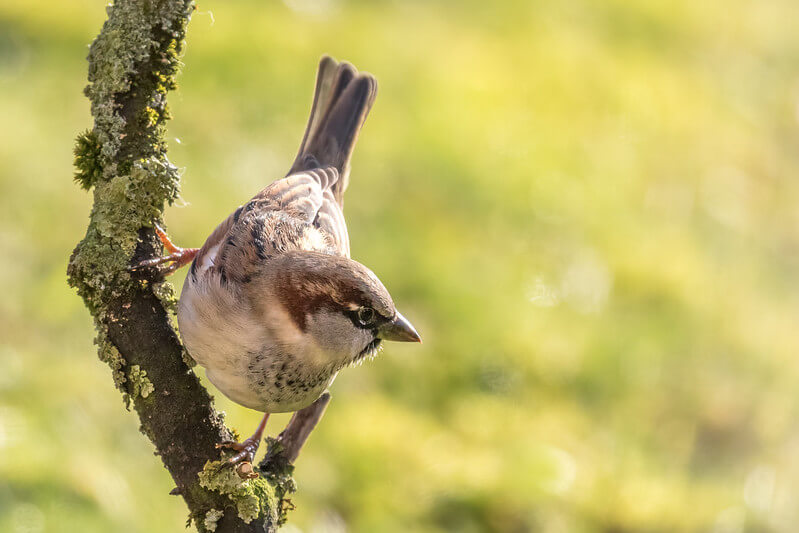 A more unusual pose where the upright tail may confuse the novice
A more unusual pose where the upright tail may confuse the novice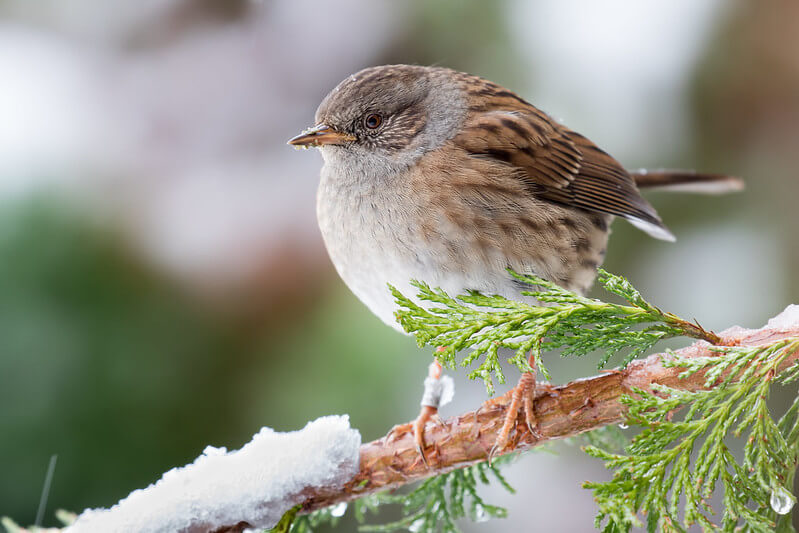 Fluffed up to keep warm
Fluffed up to keep warm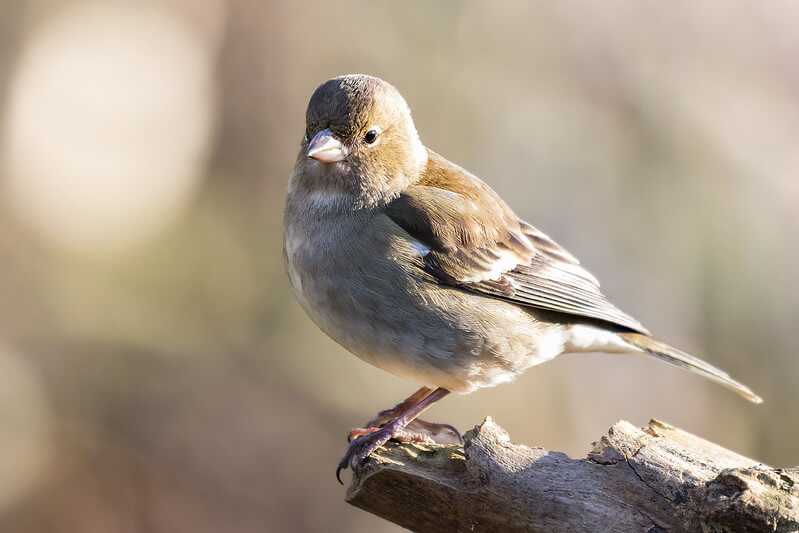 A female this time
A female this time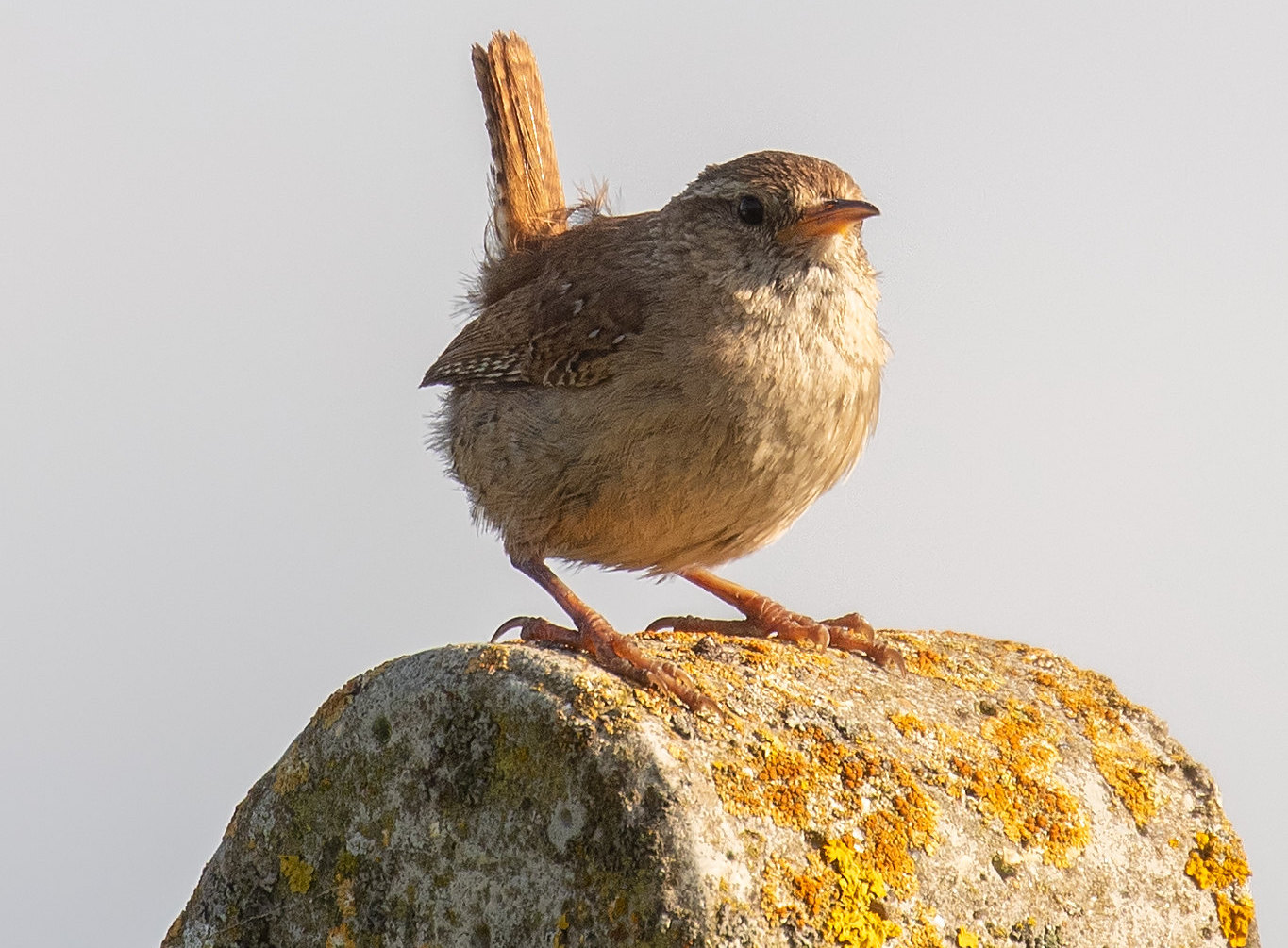 Is this bill for eating insects rather than seeds?
Is this bill for eating insects rather than seeds?Be aware of lighting conditions
Have you ever struggled to identify a bird species because of the lighting conditions?
The same bird can appear drastically different depending on the weather and environment.
Take the Treecreeper, for instance. These little birds are already elusive, clinging to tree bark with their pale bellies hidden. But the lighting can truly confuse matters.
The following two photos show just how much the Treecreeper's appearance can vary.
In one, the bird appears much browner due to the specific lighting conditions that day.
Being aware of how factors like this can alter a bird's look is important when trying to make an accurate identification.
 Treecreeper in overcast light appears grey.
Treecreeper in overcast light appears grey.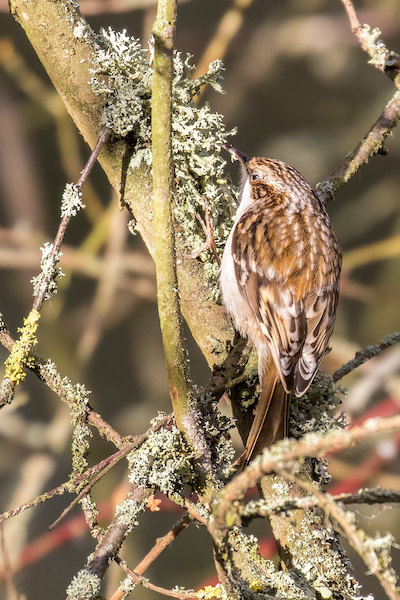 A Treecreeper in sunlight shows the brown plumage more accurately
A Treecreeper in sunlight shows the brown plumage more accuratelyTwo Pages You Might Like to Read
Using Binoculars or a Spotting Scope
Binoculars are an excellent tool for magnification and detail. They are beneficial for identifying birds that aren't close enough to see their details with the naked eye.
With a good pair of binoculars, you can appreciate the intricate patterns and colours of a bird's plumage, revealing the beauty that might otherwise go unnoticed.
For those seeking to explore the avian world from even greater distances, spotting scopes or high-powered telescopes can be invaluable allies.
Some spotting scopes have built-in image stabilisation, producing a clear image without the movement or vibrations that can plague handheld devices.
However, beginner birdwatchers should use binoculars or spotting scopes with caution—without proper training, these devices can cause eye strain and headaches if misused.
Answers to the LBJ photos
Did you struggle to identify those little brown birds photographed further up the page?
Even experienced bird watchers can find it challenging to distinguish between some of the common species.
Let's take a closer look at those four familiar species that are easy to mix up.
- The first photo shows a male House Sparrow striking a pose with his tail in the air - a stance that could easily lead one to mistake him for a wren.
- Next, we have a little bird perched on a snowy branch. Often called a "Hedge Sparrow," this is actually a Dunnock, with both males and females sharing a similar understated appearance.
- The third photo captures a portrait of a female Chaffinch. Unlike her male counterpart, she lacks the pinkish breast and contrasting wings that make him so distinctive.
- Finally, we have the tiny wren, its upright tail bearing darker markings that can be tricky to spot in this particular shot, potentially making identification more difficult.
- How did you get on?
Get closer to UK nature - Subscribe to Wild Lens!
I would love to send you my occasional newsletter so we can keep in touch.



